High Energy Workouts for a Head Start on Swimsuit Season
It's easier to work hard when you’ve got a game plan. Here are some options to help keep you moving until the last second of your workout!

Baby Steps
Coming out of high school, Sylvana M. of Rancho Cucamonga, CA, didn’t quite feel like herself. She felt as if her body “had been stuffed into a tight shell and [she] just didn’t fit.” Weighing in at 156 pounds, and standing at roughly 5’6″, she wanted to feel comfortable in her own skin again. Unsure of where to begin, she started adding walks to her daily routine and watching YouTube fitness tutorials. She cut her calorie count down to 1,000/day and began running. Not before long, the weight slowly started to come off – until she plateaued.


May 2013

May 2013
A New Horizon
Sylvana realized that she wasn’t eating the right amount of calories for what her body needed, and admits that her exercise routine was at times, inconsistent. After years of trial-and-error, with varying diet and exercise routines, she came across a bodybuilding website that seemed to help. She started noticing that she was gaining muscle, but with that, came a good amount of fat due to poor dieting.
“I was [consuming] whatever I wanted, full pints of ice cream, bottles of wine, medium fries – and it was showing,” shared Sylvana. With that, the familiar feeling of not fitting into her own skin began to come back. She started feeling insecure and lethargic, and with that, decided something had to be done. In June of 2015, Sylvana walked into an LA Fitness and was determined to make a lasting change.
“I was never the ‘fit’ girl. No one ever ran to me with questions or to seek advice in the gym. But I’m getting there! I’ve lost 10 pounds since last May (2016) and my confidence has soared. Not just from how I look, but how I feel. I know what I put into my body and I know what I put into my workouts. My body is mine and I finally feel at home in it.”
Her original fitness goal was to lose fat, with the intent to become “bikini ready”. However, since first joining LA Fitness, Sylvana shared that she has gained a lot of perspective on what makes her truly happy and comfortable in her own skin. She realized that for her, it wasn’t the way she looked or a goal number on the scale, but how exercise made her feel inside. Although, she did joke that losing over 20 pounds wasn’t a horrible side effect of her newfound exercise routine.
Her goals today are a lot more strength driven. She hopes to become better at burpees, improving her sprint speed on the treadmill, while also tackling pistol squats and pull-ups. She appreciates that her newer goals are not as aesthetically centered, but instead, more focused on how she’s pushing her body into becoming stronger than ever.
Tasty Talk
Having made strong advances in her fitness routine, Sylvana understood that it was only half the battle. In order to achieve her overall goals, she was going to have to adjust her eating habits too. While diet varies from person-to-person, Sylvana noticed that what worked for her was increasing her veggie and lean protein intake, while completely cutting out dairy, and drastically decreasing her intake of junk foods and red meat. She has noticed a remarkable difference in her body’s health since she made those changes.
A Word of Advice
“My one piece of advice to others on their fitness journey, or just starting out, would be to do what you love. I tried so hard to like spin classes and 6 AM jogs when I started out because I believed those to be the best workouts. But I found it difficult to get myself out of bed knowing that’s what I had to look forward to. I’ve found that I love weightlifting and interval body-weight exercise (like push-ups and jumping squats and even burpees) and that’s what gets me excited to hit the gym! Find what works for you and work it!”

BEFORE – July 2016
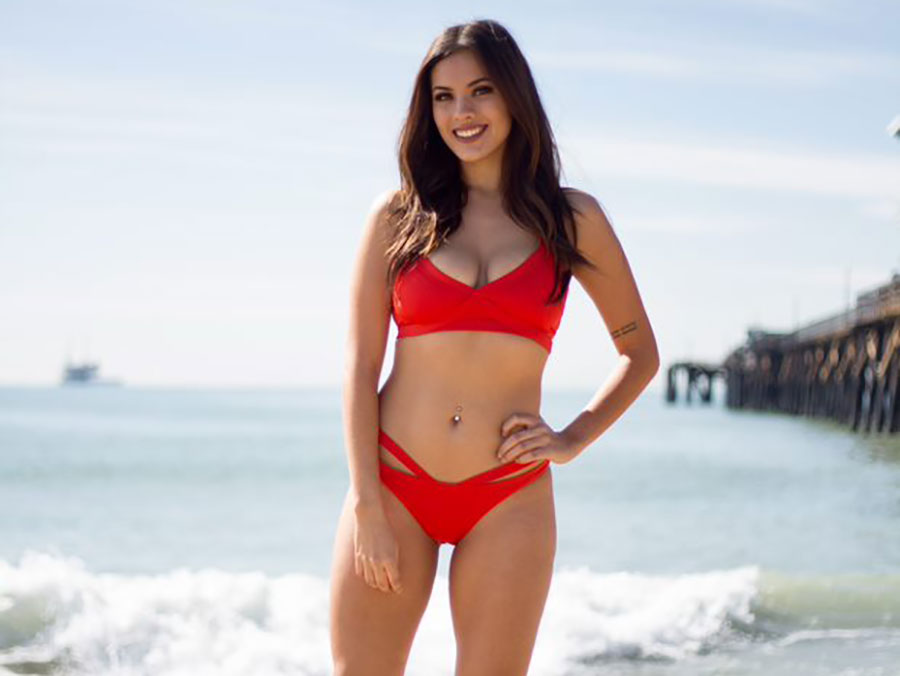
AFTER – February 2017
Where Is She Now?
Sylvana continues to work out and eat healthily and credits her boyfriend for helping push her to get out of her sweatpants and into the gym. While Sylvana doesn’t have a trainer, she does appreciate the encouragement from her boyfriend, who oftentimes works out with her at the gym. (Multiple studies have shown that working out with a partner can better increase the chances of you reaching your fitness goals, read more here).
It's easier to work hard when you’ve got a game plan. Here are some options to help keep you moving until the last second of your workout!
Does liberally salting your food help you pump more iron in the gym? Registered Dietitian, Debbie James, investigates the claims!
It’s Multiple Sclerosis Awareness Month! Here is what you need to know about exercise safety with MS.
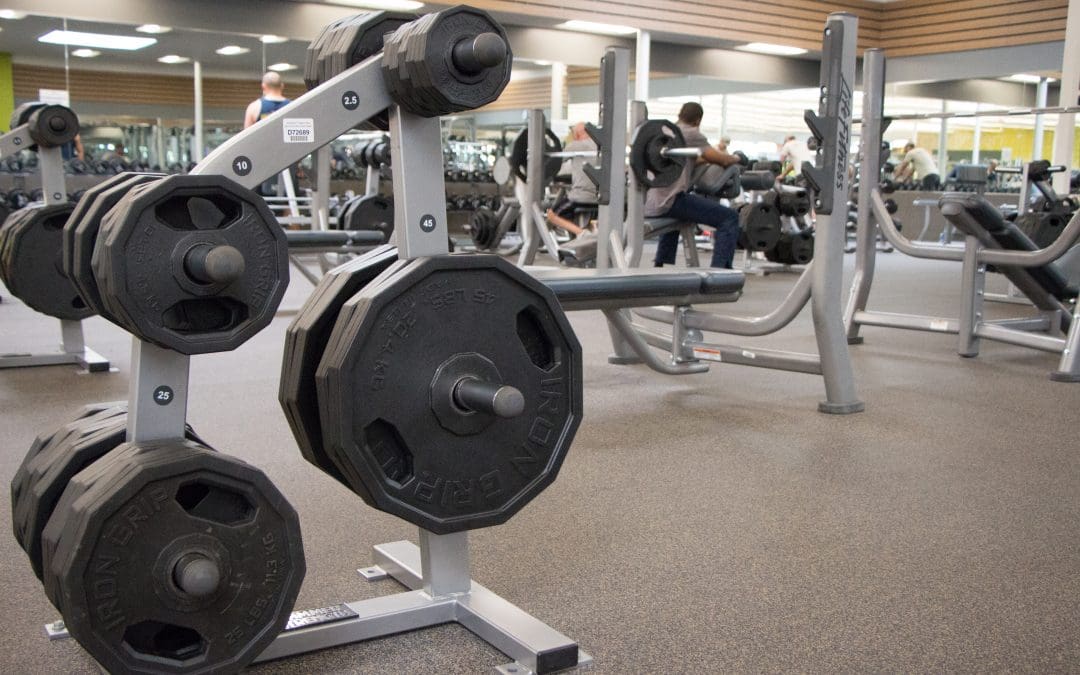
Do you have a fitness goal? Let us know here! To learn more about Commit to fit, click here.
These are our most recent members who have committed to their fitness goals.

Carlie B.
Carlie is training for her first fitness competition! We wish you the best of luck!

Kathleen M., Cathy R., Terri M.
Friends who workout together, stay together. Looking great ladies, keep up the hard work!
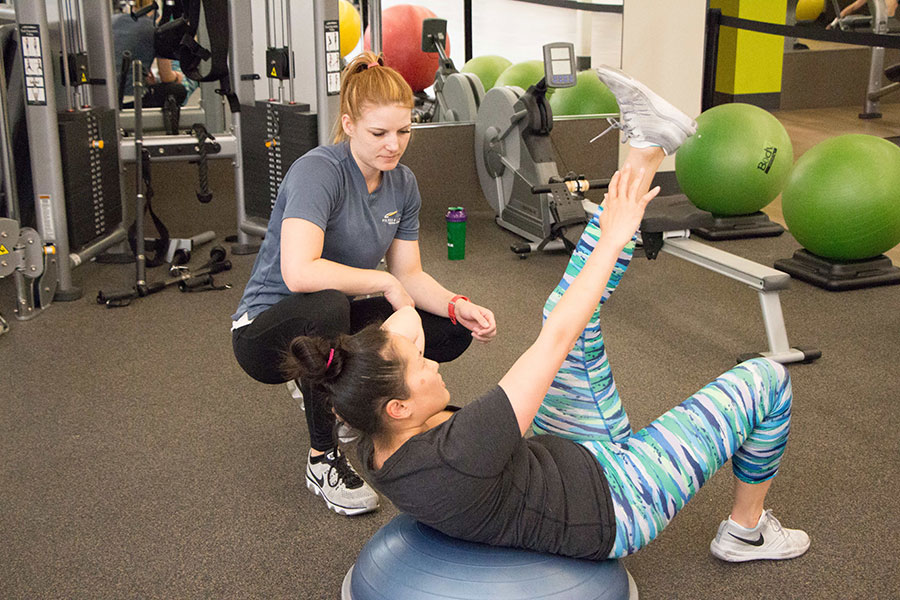
Denise A.
Denise is committed to becoming fit – and it shows when she works out with her trainer!
It's easier to work hard when you’ve got a game plan. Here are some options to help keep you moving until the last second of your workout!
Does liberally salting your food help you pump more iron in the gym? Registered Dietitian, Debbie James, investigates the claims!
It’s Multiple Sclerosis Awareness Month! Here is what you need to know about exercise safety with MS.


Everyone wants a flatter belly, especially when warmer weather dictates lighter clothing. When it comes time to hit the beach or pool, will you be ready to dive in? To even head in the direction of belly-baring status, you must first know thine enemy – your abdominal fat. Afterward, read on to see what you can do to help chisel a trimmer tummy.
No matter your current physique, the following approaches may help you achieve obtaining a flatter belly.
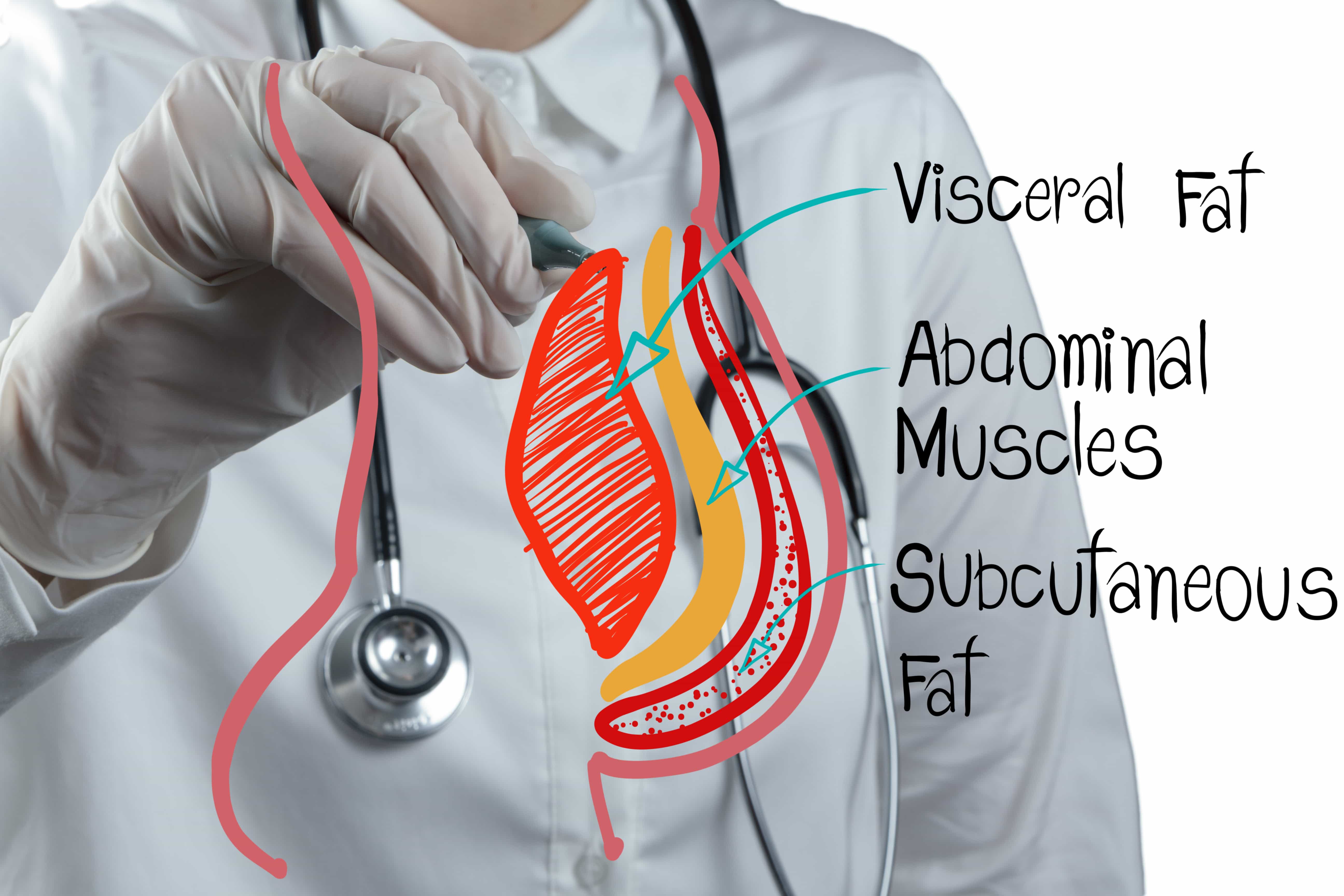
Your abdominal fat is actually in two places or compartments – under the skin (subcutaneous) and intra-abdominal (visceral) fat. The former lies above the abdominal muscles, the latter beneath. In simple view, here’s what they look like:
It just takes a quick measurement to see how much fat you’ve got and to track changes. Waist circumference can’t pinpoint where fat lies, but this measurement does correlate with overall abdominal fat. Total waist measurement depends on your body frame size, so it’s better to look at waist to hip ratio which shows how your belly area compares to your hips.
How to measure your Waist-to-Hip ratio (either metric or customary):
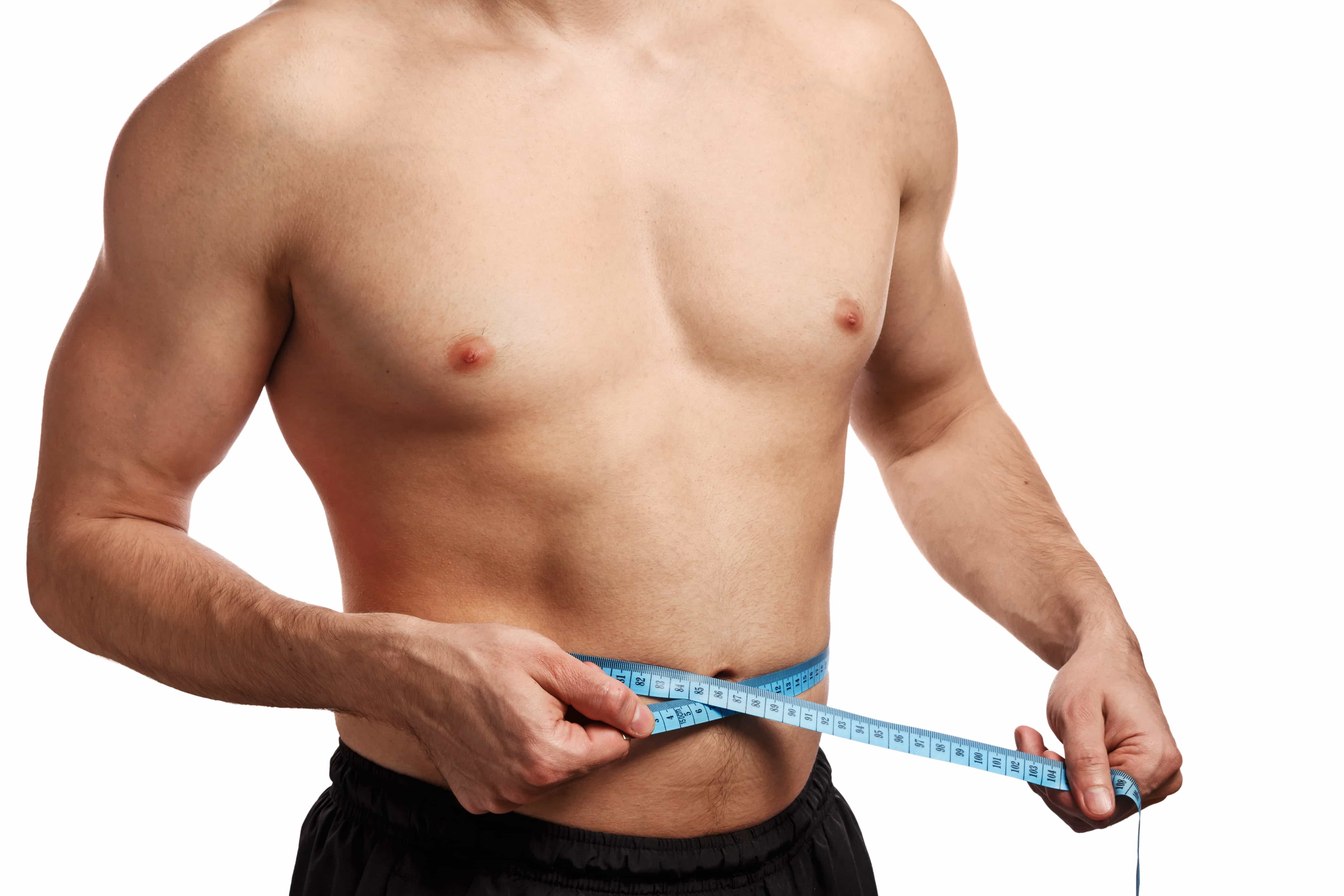
Greater physical activity is associated with lower waist circumference and waist-to-hip ratio. It’s no secret that moving muscles are the furnace for fat burning. Exercise is really essential in fat metabolism. Exercise burns fatty acids (in processes called lipolysis and oxidation), contributing to reduction in body fat. Aside from exercise aiding in fat-burning, a developing theory is that fat cells, including those in the abdomen, are temporarily ‘starved’ when blood flow is focused to moving muscles.
True, you can’t spot reduce, selectively dropping fat from only one area of the body. But new research indicates that certain types of exercise can reduce belly fat more than others. While the same level of calories are burned with each, anaerobic high-intensity intermittent training has been shown to produce greater abdominal fat reduction than continuous aerobic training.1
Energy
Calorie restriction (regardless of energy source) affects both visceral fat and subcutaneous fat. This is only true to an extent, as very low calorie diets end up with the losses of visceral fat regained weeks afterward. In fact, modest weight loss, even 5% body weight for overweight individuals, is enough to reduce visceral fat, regardless of method. One study showed that 4 different calorie-reduced diets were equally effective in reducing abdominal fat, with most loss coming from subcutaneous fat.2
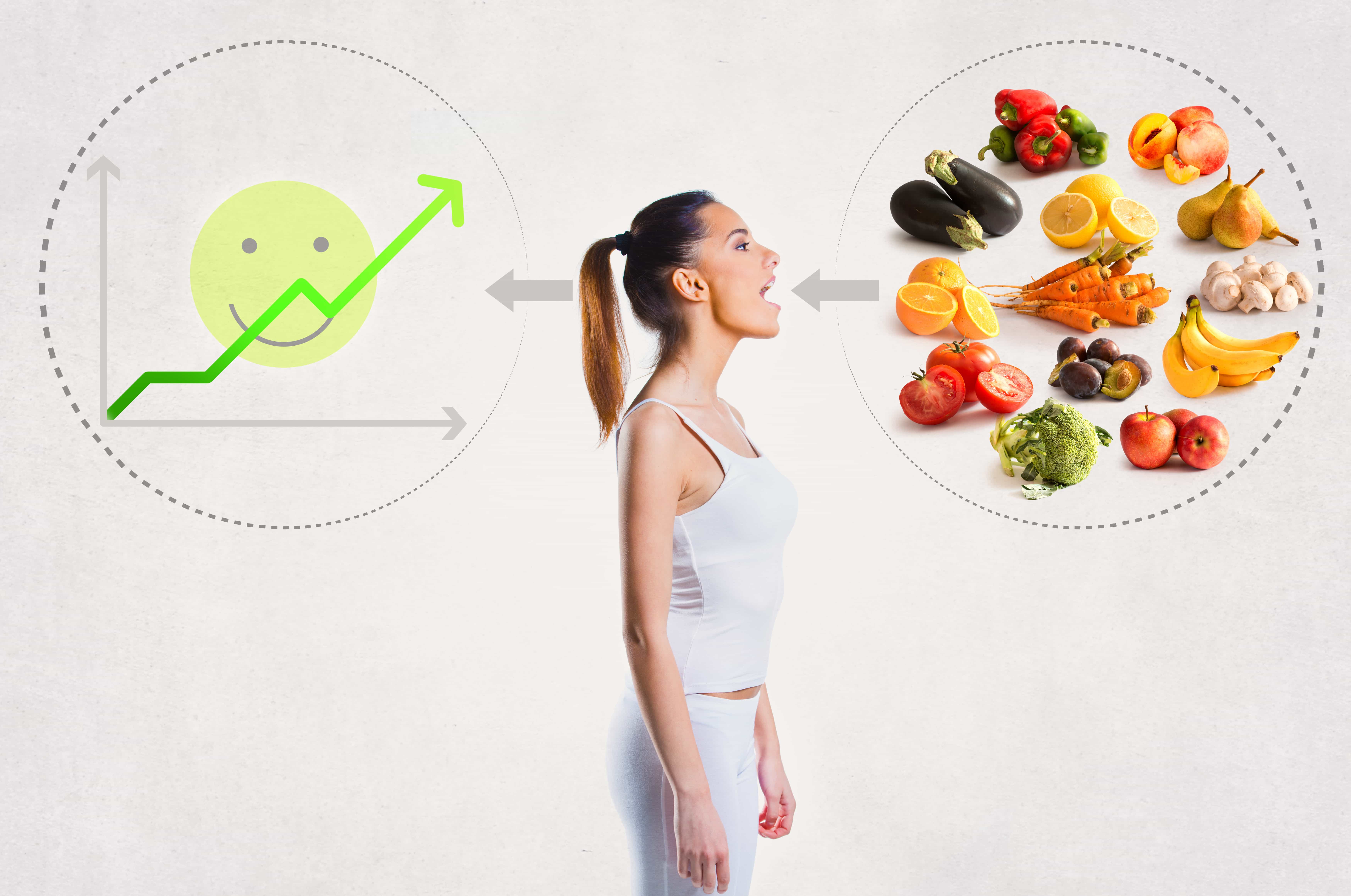
Composition
A greater intake of fat and carbohydrates, typical of Western diets, is associated with higher waist circumference. Conversely, those following a Mediterranean style diet were less likely to gain abdominal fat over 10 years.3 This style reflects a focus on plant-based foods (like vegetables, fruit, and whole grains) with moderate protein intake, minimal animal fats, and a prominence of olive oil, all resulting in a low saturated fat intake. The bulk of research indicates conventional nutritionally-balanced plans are as effective as high protein diets in reducing abdominal fat.

Green Tea
Green tea (vs. black) is made with the youngest leaves, which have the most catechins. See our related article – Nutrition is Sprouting this Spring!
At a certain threshold, catechin compounds in green tea can impact abdominal fat. These compounds (prominently EGCG) may affect the sympathetic nervous system in a way that influences fat distribution. It takes about the equivalent of 5 cups of tea, or 500 mg catechins, for an effect. Studies with significant finding used catechin-enhanced beverages.4,5 More is not better… consuming >800 mg ECGC in one sitting would be like slamming a gallon of green tea all at once, and instead of acting as an antioxidant (as it does at lower levels), you’d get pro-oxidant effects! Also, having smaller servings spread throughout the day is more effective than a single huge dose.
For the most catechins, look for quality packaging to ensure better storage with minimal exposure to oxygen, light, and moisture. Also, don’t take highly concentrated EGCG green tea extracts or supplements while taking acetaminophen.
Though it won’t change your belly fat, adjusting your posture could improve the appearance of your midsection. Tilt your pelvis when standing so that your tailbone is in (pointed down, not out), as shown to the right.
References:

This article should not replace any exercise program or restrictions, any dietary supplements or restrictions, or any other medical recommendations from your primary care physician. Before starting any exercise program or diet, make sure it is approved by your doctor.
It's easier to work hard when you’ve got a game plan. Here are some options to help keep you moving until the last second of your workout!
Does liberally salting your food help you pump more iron in the gym? Registered Dietitian, Debbie James, investigates the claims!
It’s Multiple Sclerosis Awareness Month! Here is what you need to know about exercise safety with MS.


What is the best way to calculate RMR?
– Mark B.

The best measurement of resting (awake/alert) metabolic rate is to conduct an indirect calorimetry test using metabolic equipment, as done in a research laboratory or hospital setting. In lieu of a physical test, the second best way to predict resting metabolic rate is to calculate/estimate using a validated equation. I recommend the Mifflin-St. Jeor equation or the one used by the World Health Organization. For your computational pleasure here they are:
The Mifflin St. Jeor equations are used often in the medical and weight loss fields because of their accuracy, and are recommended by the Academy of Nutrition and Dietetics.
The World Health Organization, as well as the United Nations University and Food and Agricultural Organization, use the following equations, which were derived based off a large database, reflecting many countries over several decades.
As is true with any equation, these equations are only estimations of your needs, so you might want to try both and obtain a range that your true RMR probably falls within. Neither of the above take into consideration lean mass versus fat mass, so they aren’t practical for extremely muscled or morbidly obese individuals. For teens, the Schofield method (previously used by the World Health Organization and the US government to formulate the RDAs) has different equations for various age groups.
– Debbie J., MS, RD
This article should not replace any exercise program or restrictions, any dietary supplements or restrictions, or any other medical recommendations from your primary care physician. Before starting any exercise program or diet, make sure it is approved by your doctor.
Want more? SUBSCRIBE to receive the latest Living Healthy articles right in your inbox!
The Elimination Diet is not what it sounds like! We’re sitting down with Debbie James, RDN, to bring you what you need to know about this interesting diet!
The increasingly popular meatless burgers taste and feel like cooked ground beef, but how much do you know about the nutrition details?
Registered Dietitian, Debbie James, talks about the right recovery drink for your workout based on type, intensity, and duration.
 Have a nutrition question? Our registered dietitian is ready to help!
Have a nutrition question? Our registered dietitian is ready to help!
Email nutrition@lafitness.com or submit your question below and it may be featured in an upcoming article!

“You can either celebrate what you can do, or mourn what you can’t.”
Documentary-style filmmaking has a way of exposing some of the most heartfelt elements of the human condition. In that regard, the documentary film Augie does not disappoint. Augie is raw, emotional, and moving. Created by award-winning director James Keach, viewers are taken on a journey through the life of fitness entrepreneur and icon, Augie Nieto.
Augie, a legend who is often recognized and referred to on a first name basis, is the founder of Life Fitness, as well as the chairman of Octane Fitness. He is a man who let nothing stop him while on his pathway to success. It seemed like Augie had it all – until he was diagnosed with ALS in 2006.
In an almost cruel and ironic twist of fate, Augie found himself suddenly battling a fatal neurological condition, which slowly weakened his muscles and impacted his body’s ability to move. However, Augie was determined not to just sit at the sidelines and let the disease win. Instead, he started a nonprofit called Augie’s Quest, which funds the ALS Therapy Development Institute and their efforts in finding a cure.
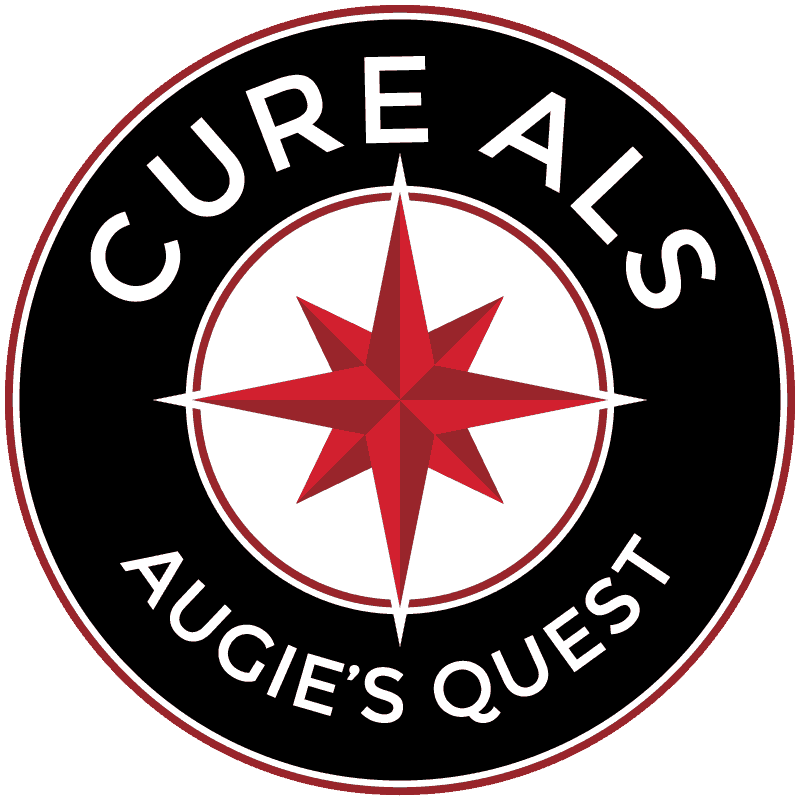
“The best gift I can give my wife and kids is to do something when you’re faced with adversity, and that’s a gift.”
Little is currently known about what triggers ALS, but scientists are working hard to better understand this disease and find methods to stop it. Those suffering from the disease start losing control of their voluntary muscle movement, but retain the functionality of their brain. There are two types of ALS: sporadic and familial. Sporadic is the most common and accounts for about 90% to 95% of all cases. This means it can affect anyone, anywhere, at any time. As stated on the Augie’s Quest webpage, “ALS is not an incurable disease. It is an underfunded one.”1
Augie does a wonderful job of highlighting the charismatic personality and refreshing sense of humor that Augie carries with him while making the most out of his life. Augie’s upbeat demeanor acts as an inspiration by showing that no matter what we are faced with, a little humor can help us carry on. Aside from highlighting just Augie’s life, Augie introduces viewers to short interviews of others battling ALS. It is interesting to see the perspectives of both those diagnosed with the disease as well as how it affects the loved ones around them.
Augie is a love story. It is inspirational and educational. And it is the next must-see documentary on your watch list. Augie recently was screened at the Newport Beach Film Festival and will be released later this year. Find additional upcoming screenings here.


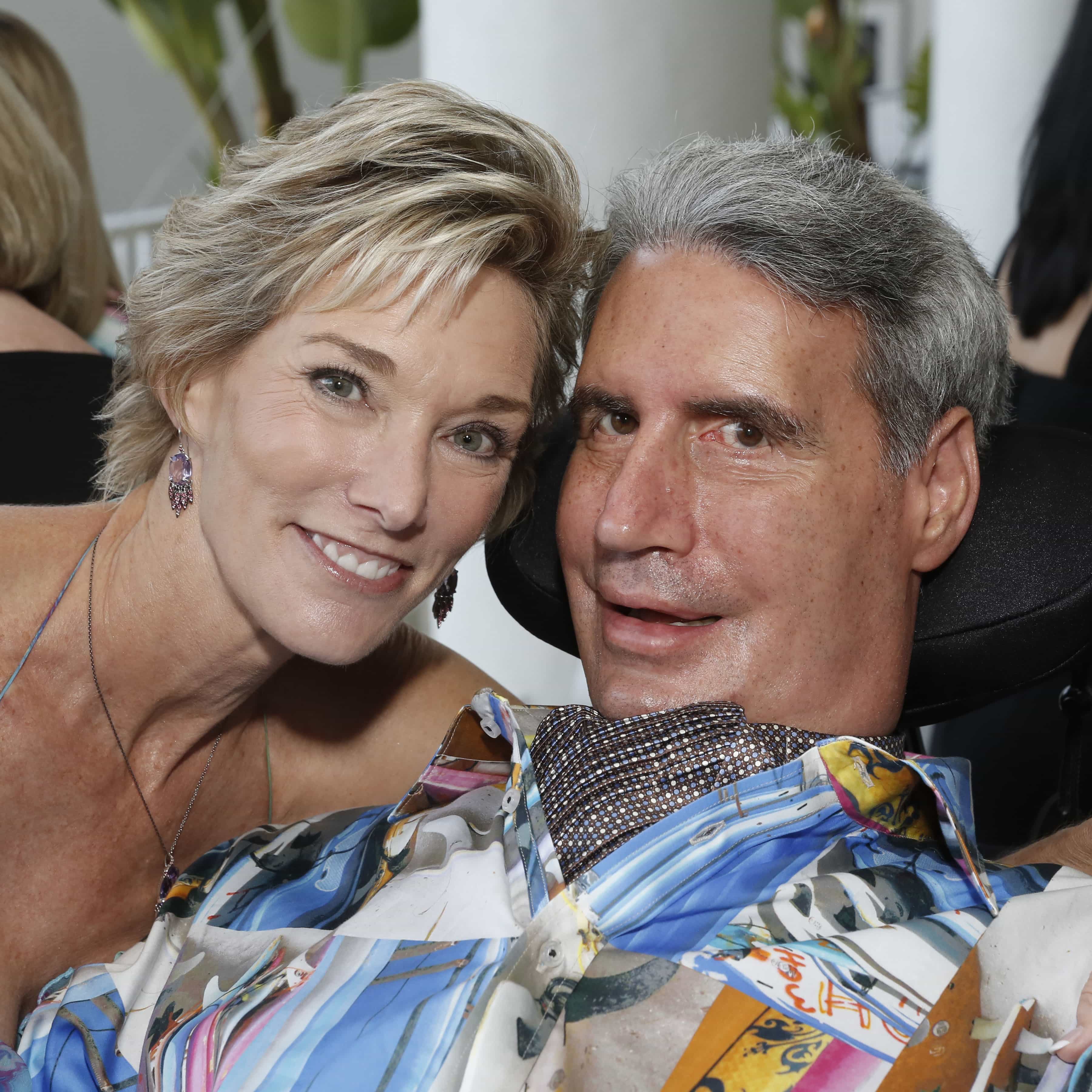
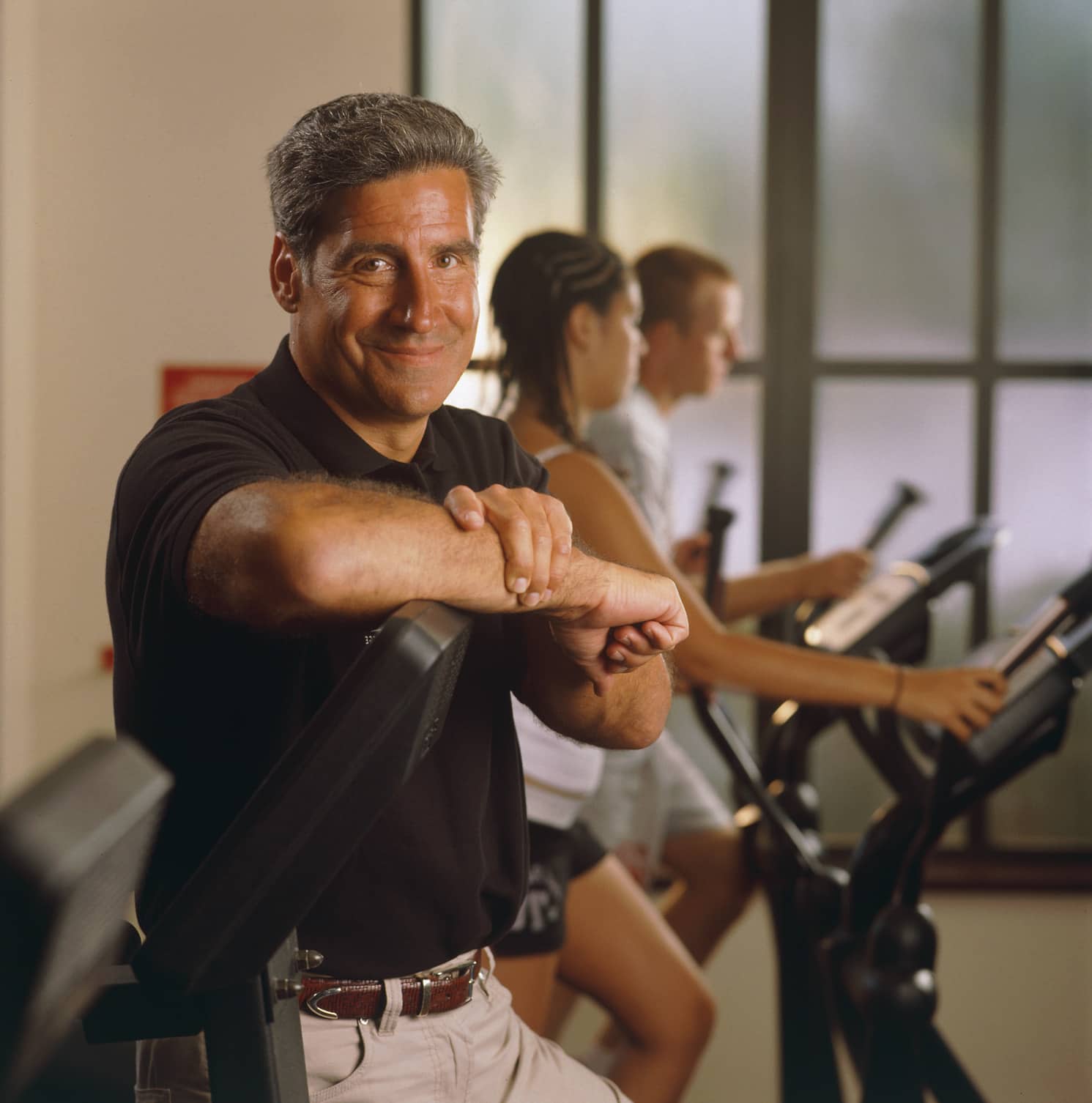

LA Fitness is proud to stand behind Augie and support his efforts in finding a cure for ALS. For over 6 years, LA Fitness has partnered with Augie’s Quest to help raise funds for a cure. Help LA Fitness in our efforts to support Augie’s Quest by donating here. To learn more, please visit http://lafitnesscares.com/.
Sources:
It's easier to work hard when you’ve got a game plan. Here are some options to help keep you moving until the last second of your workout!
Does liberally salting your food help you pump more iron in the gym? Registered Dietitian, Debbie James, investigates the claims!
It’s Multiple Sclerosis Awareness Month! Here is what you need to know about exercise safety with MS.
Be the first to know about exclusive
content, deals and promotions